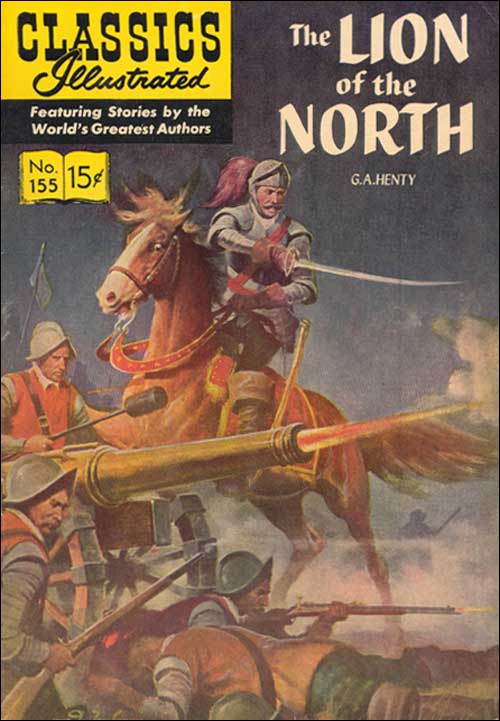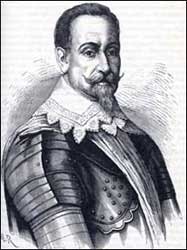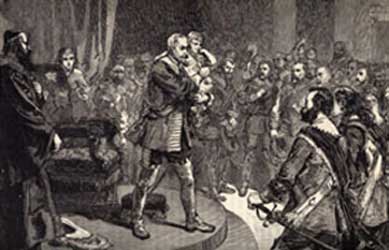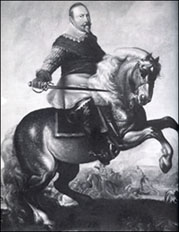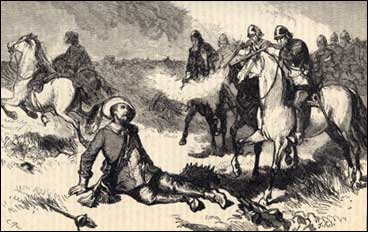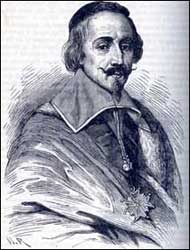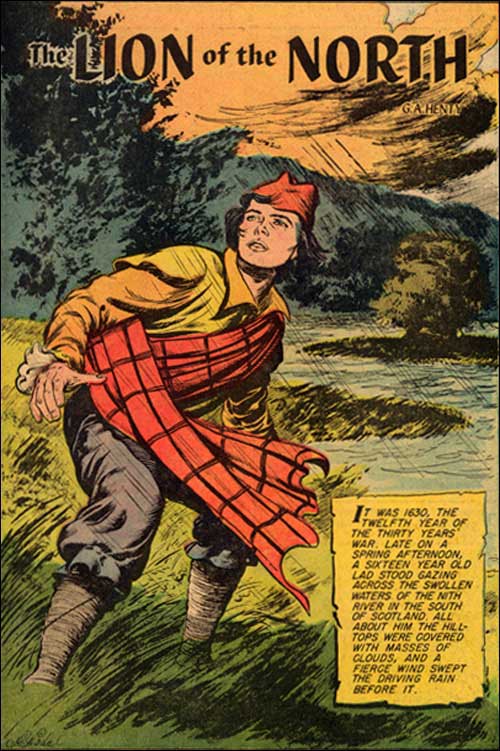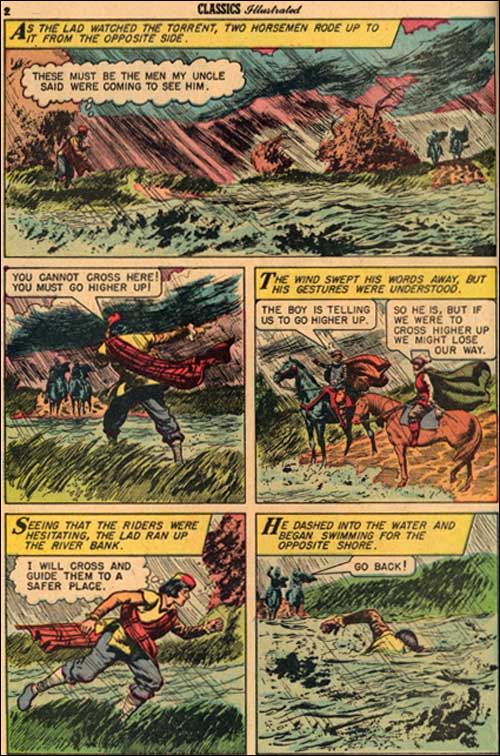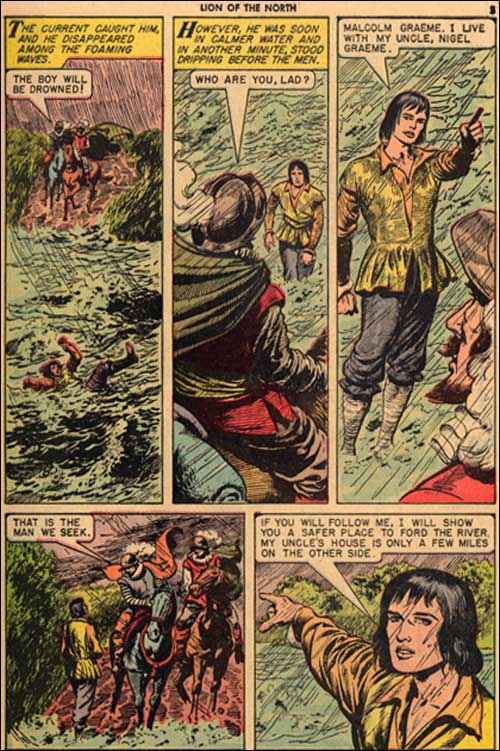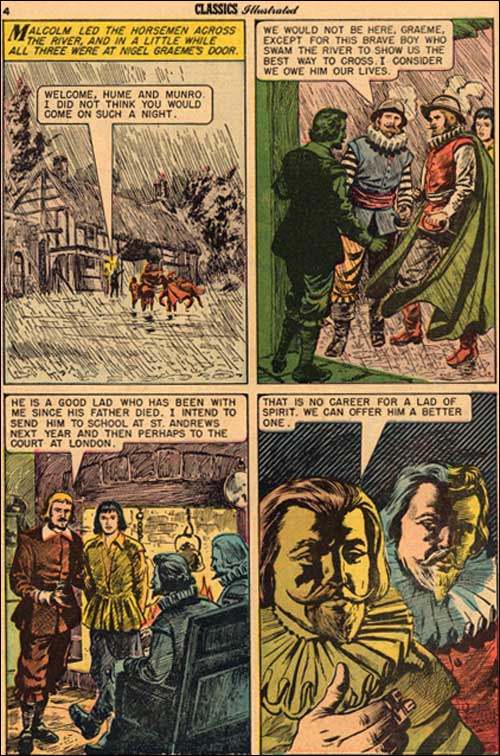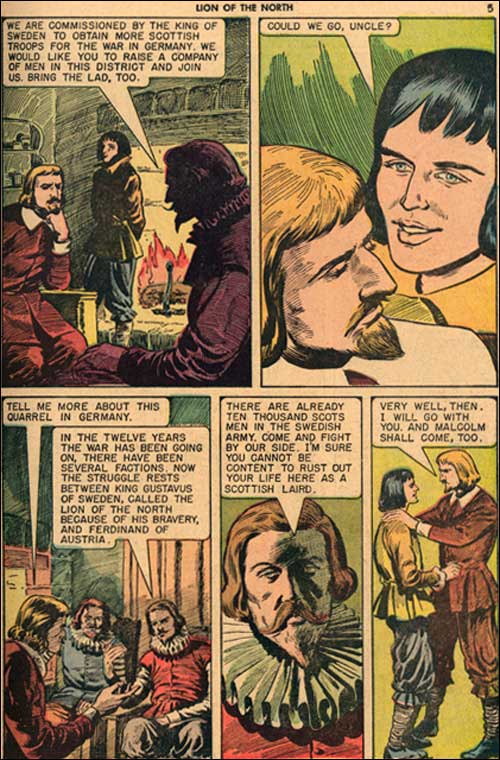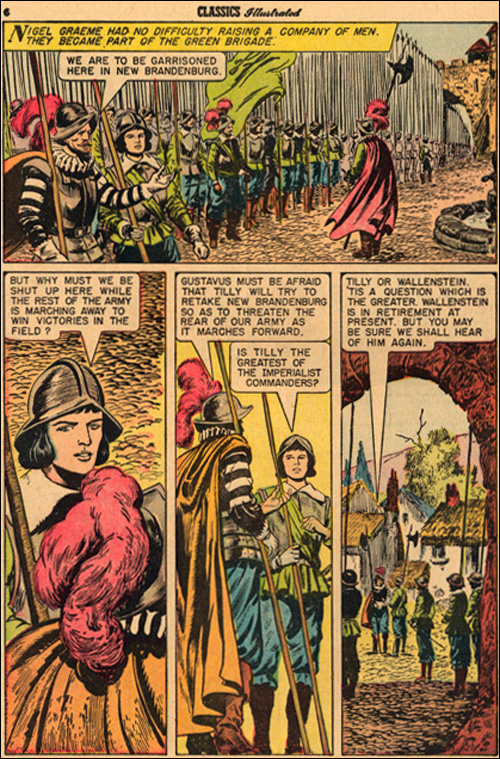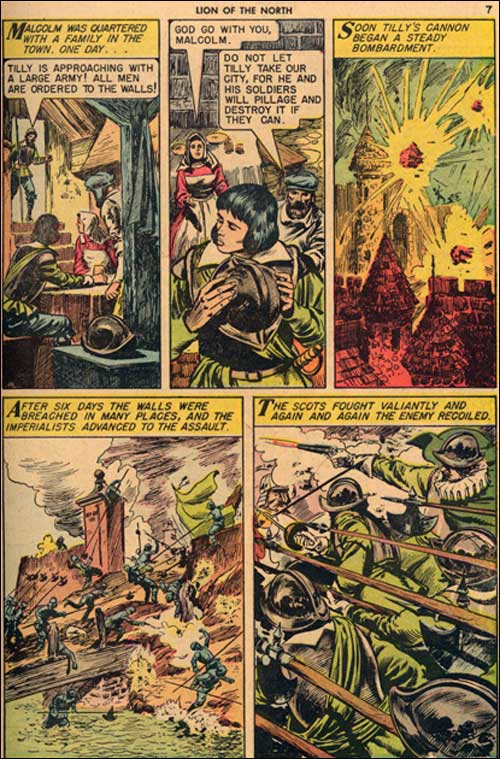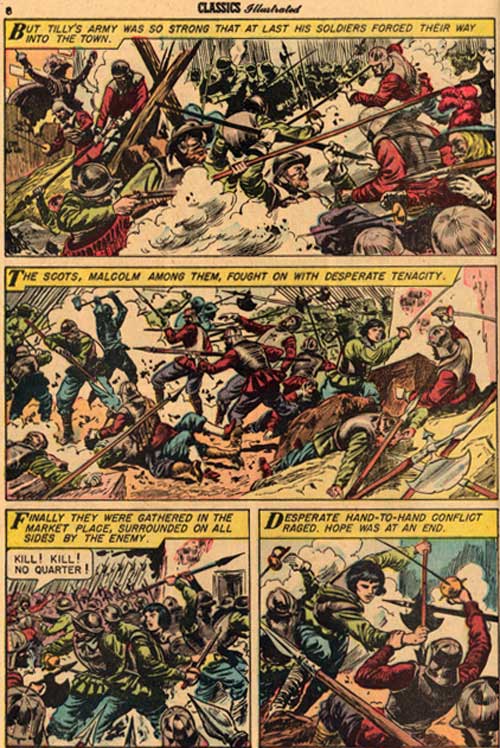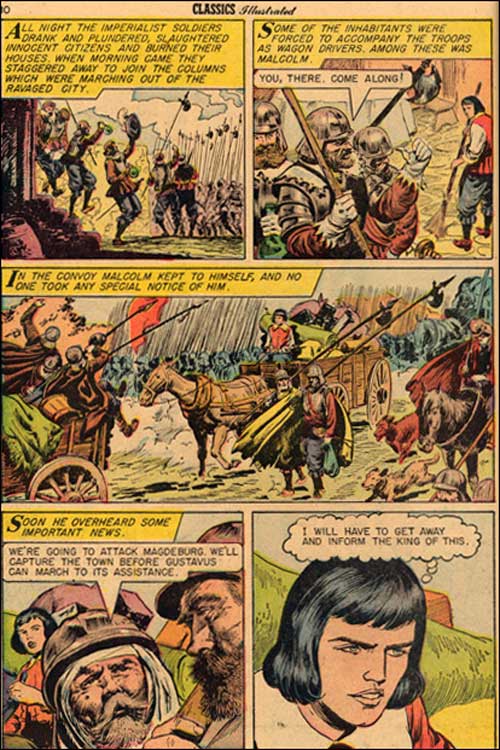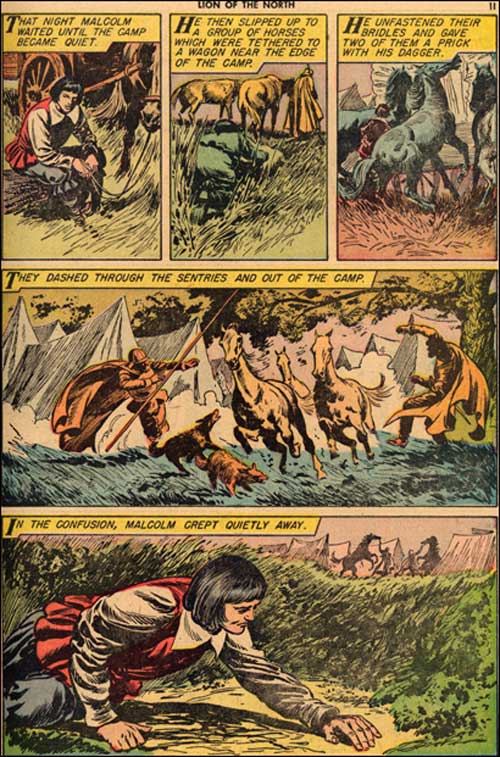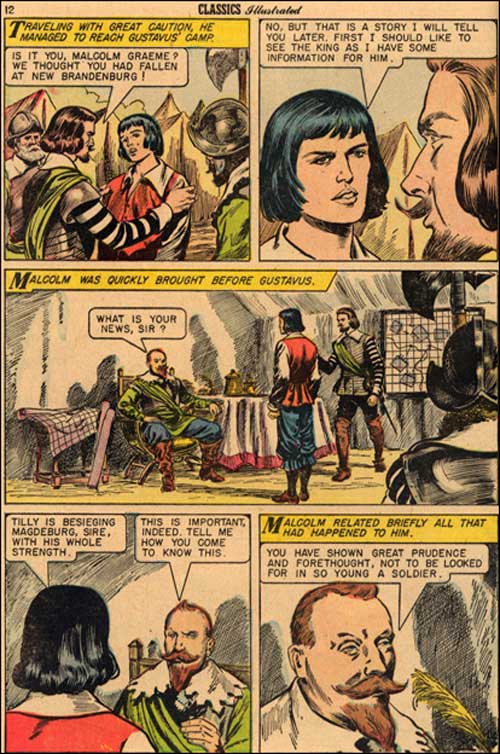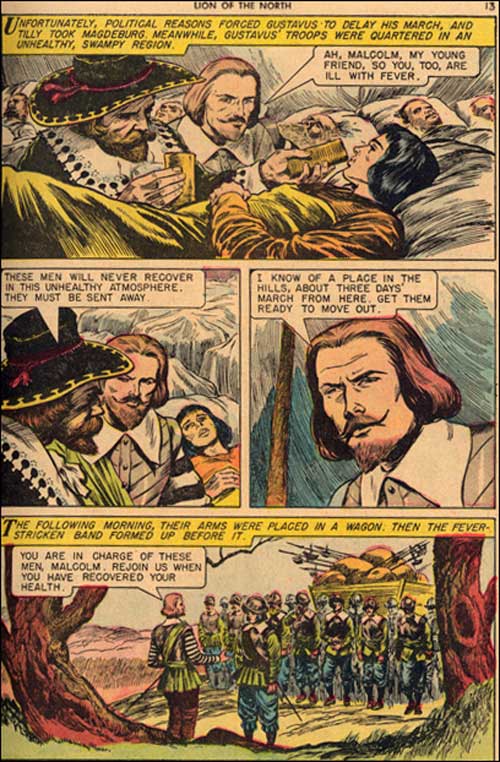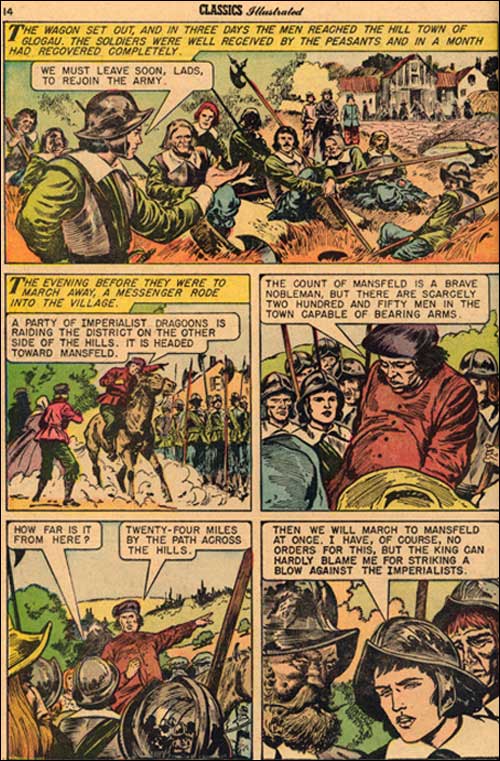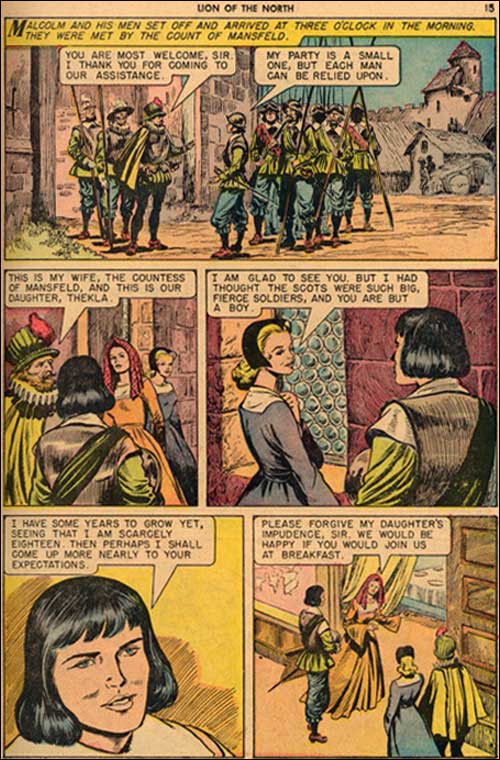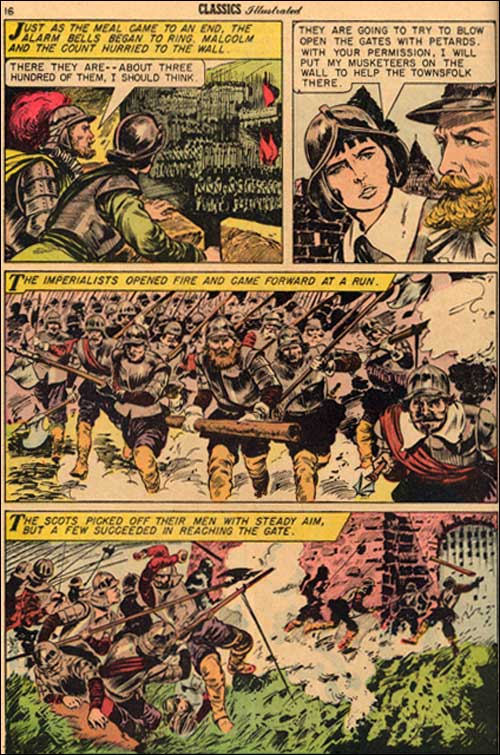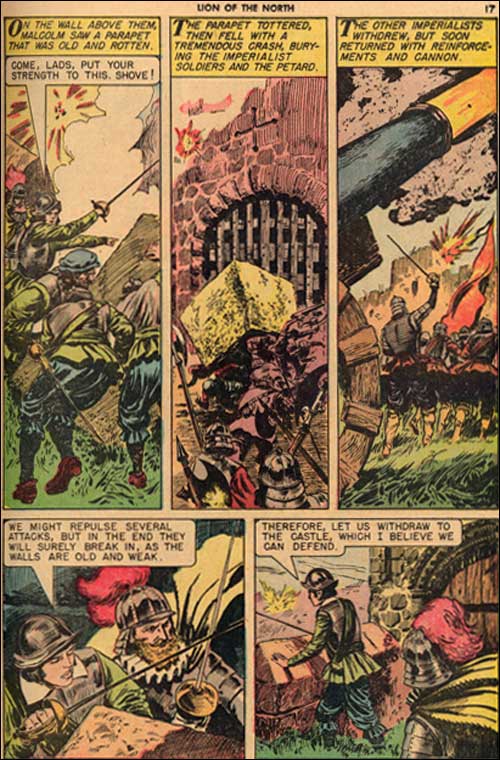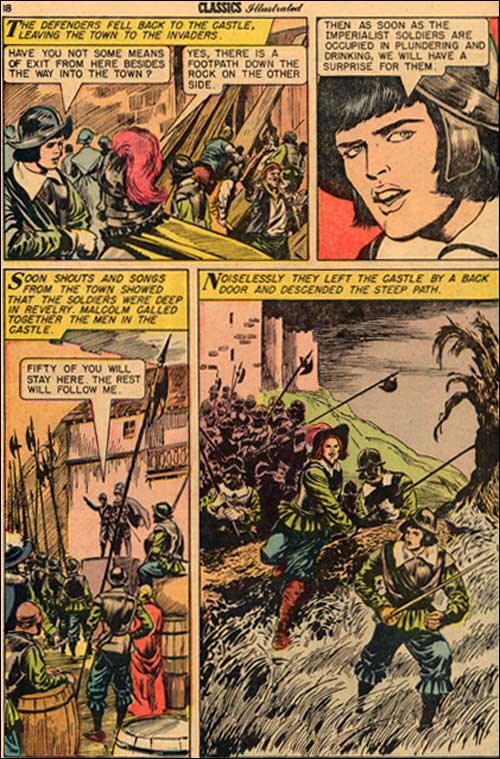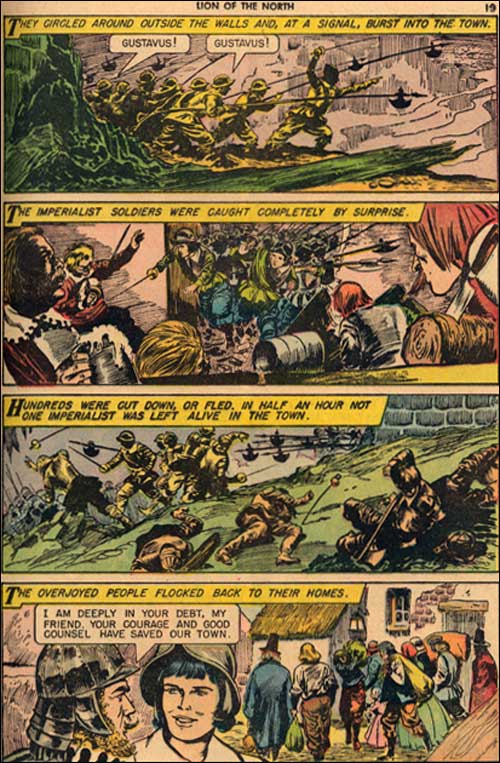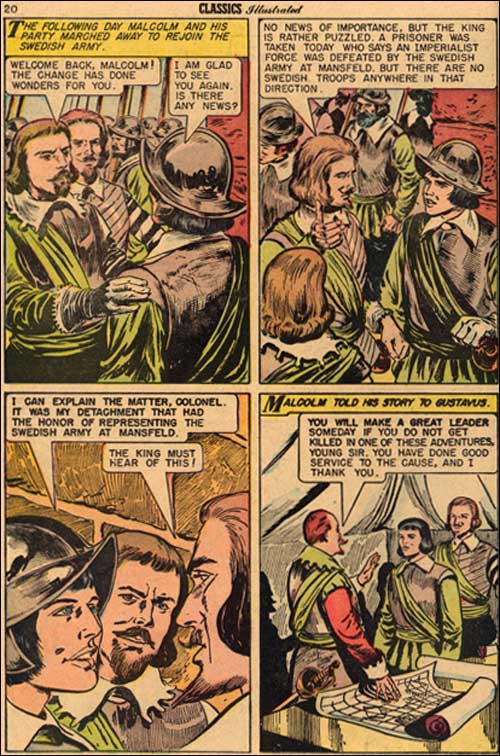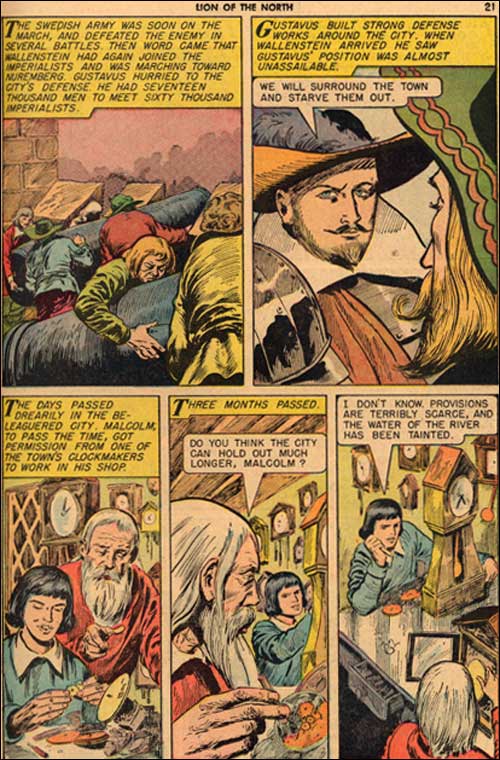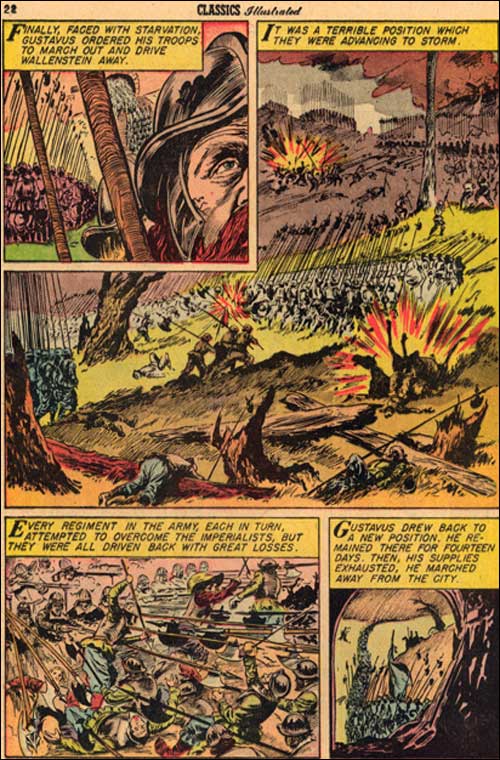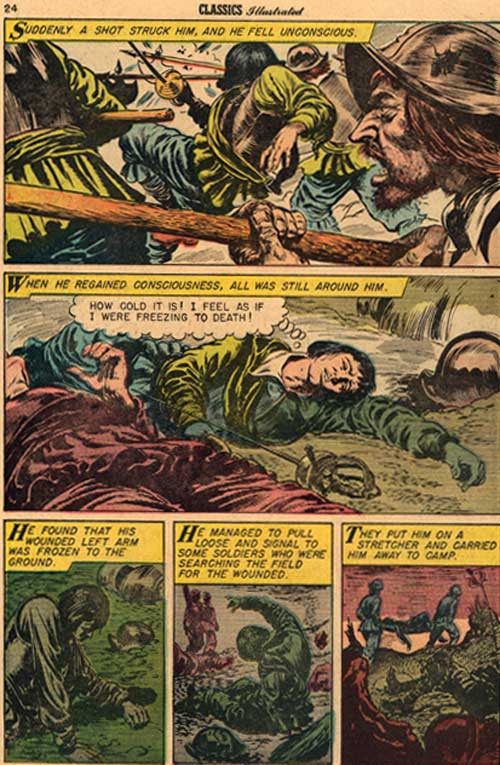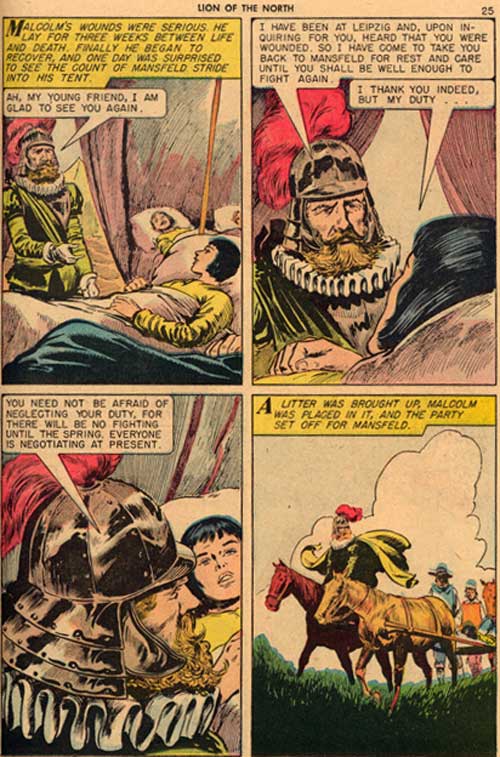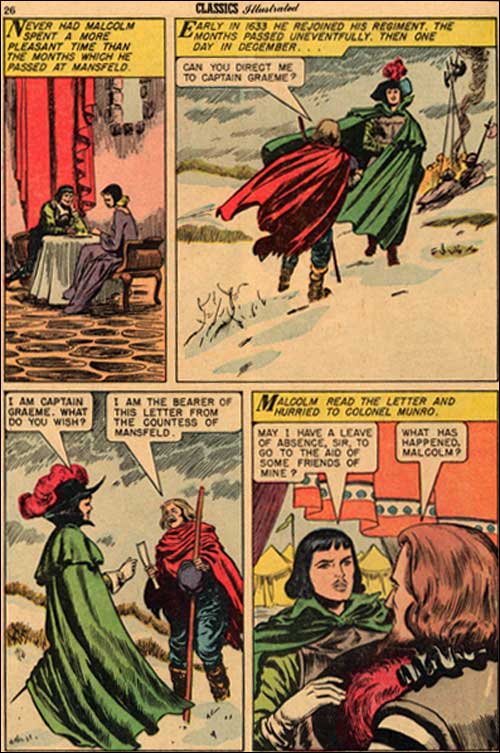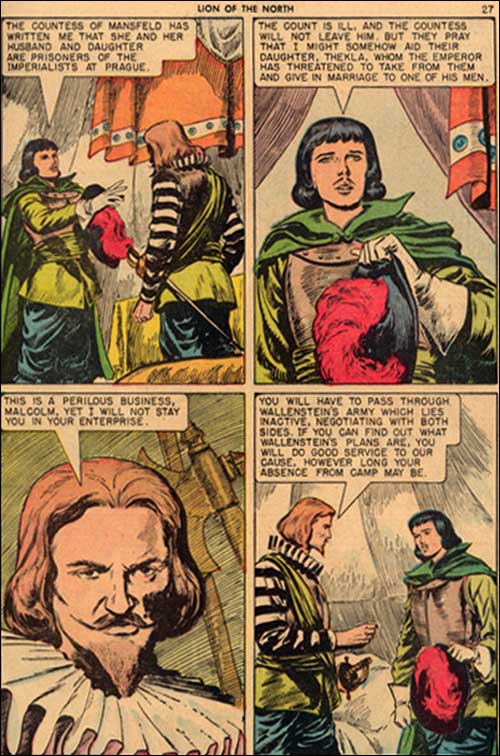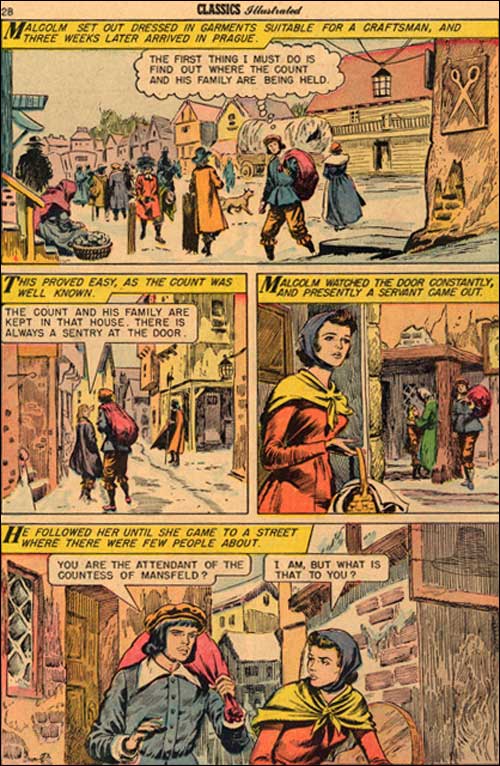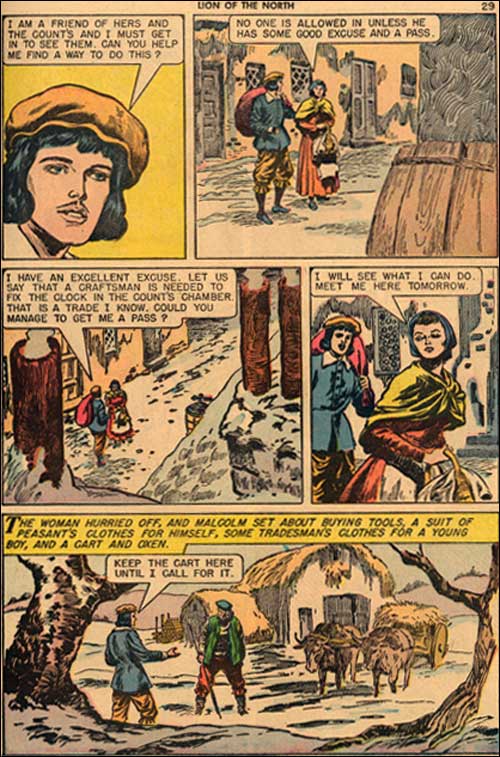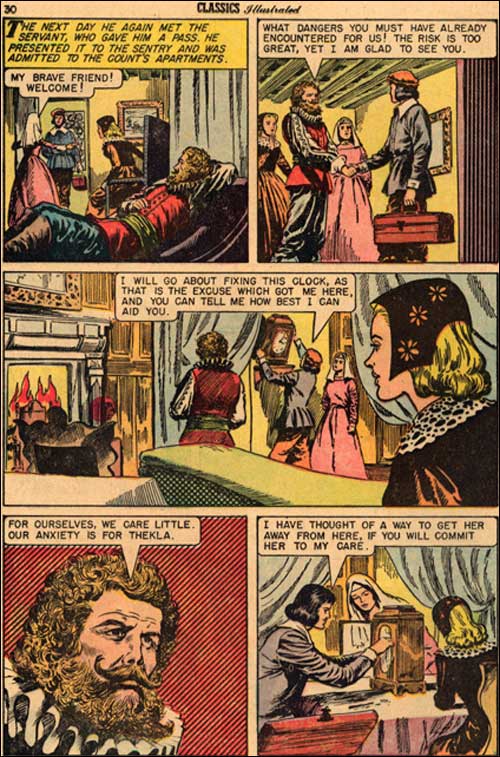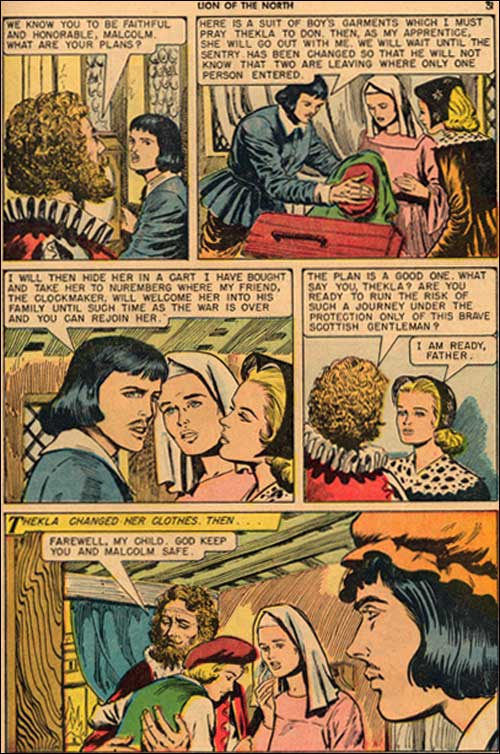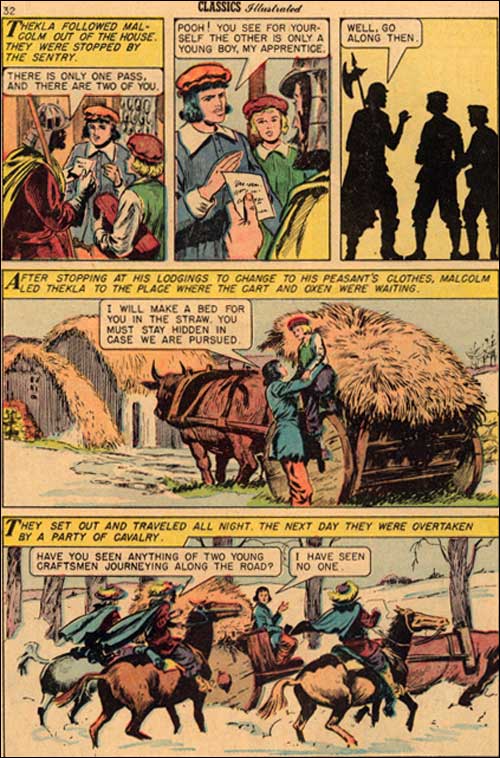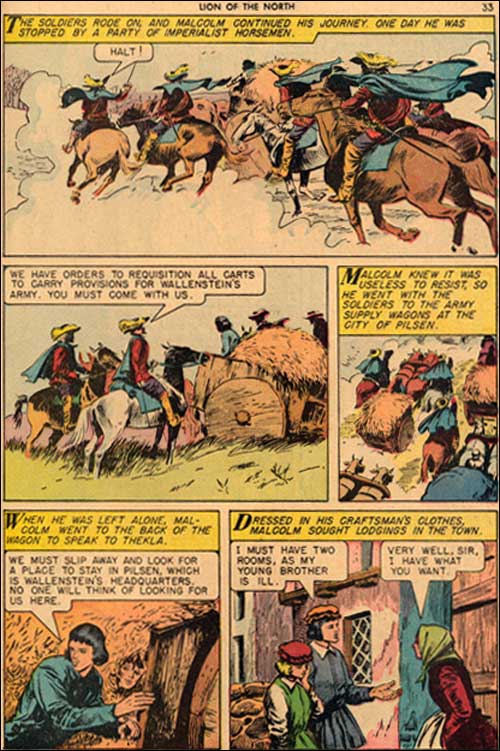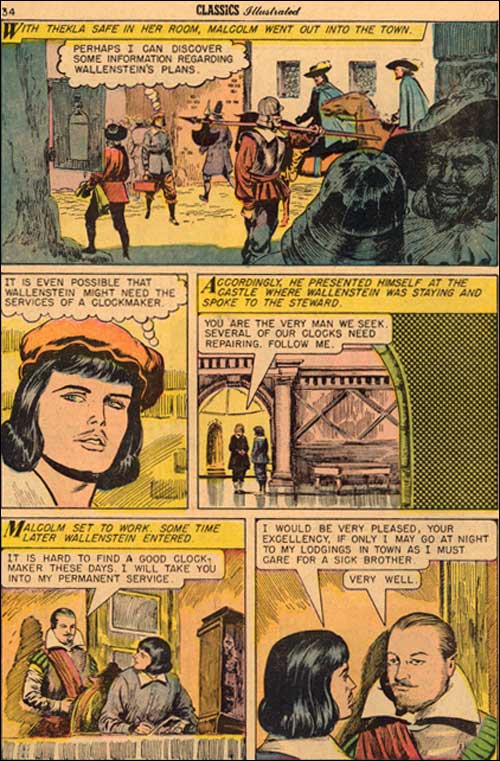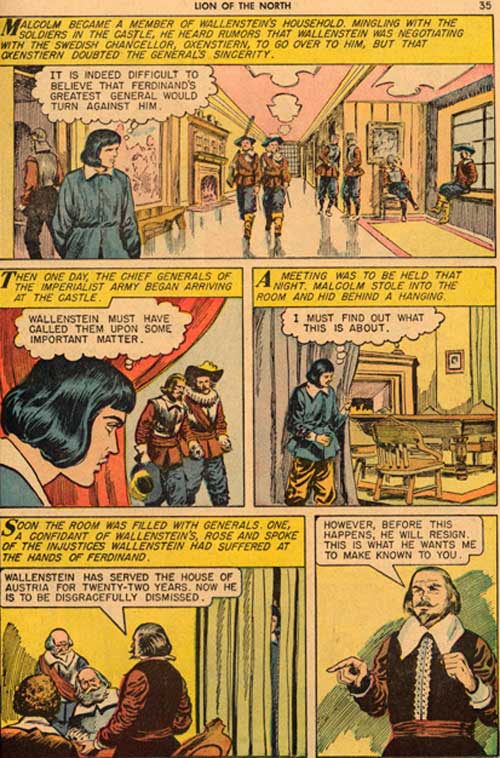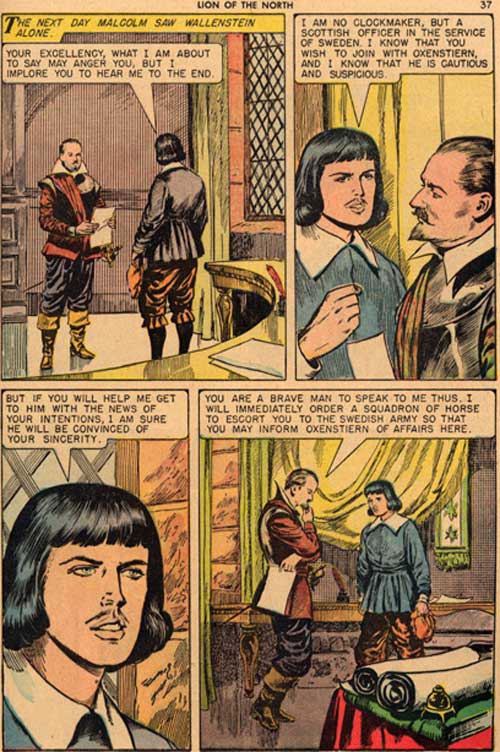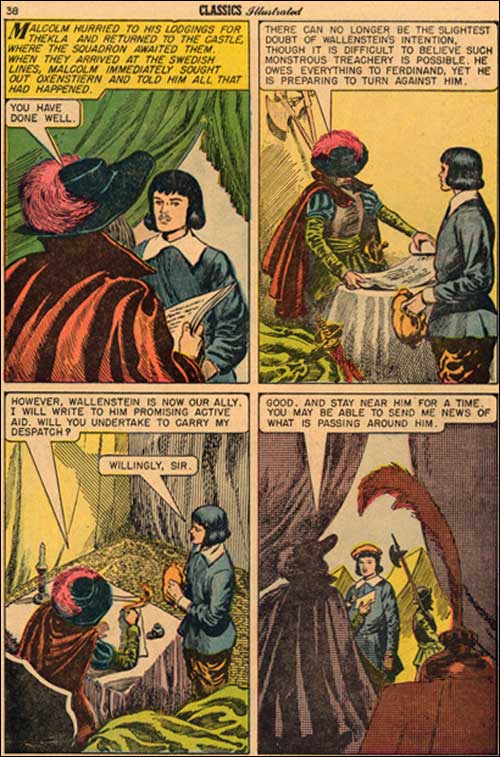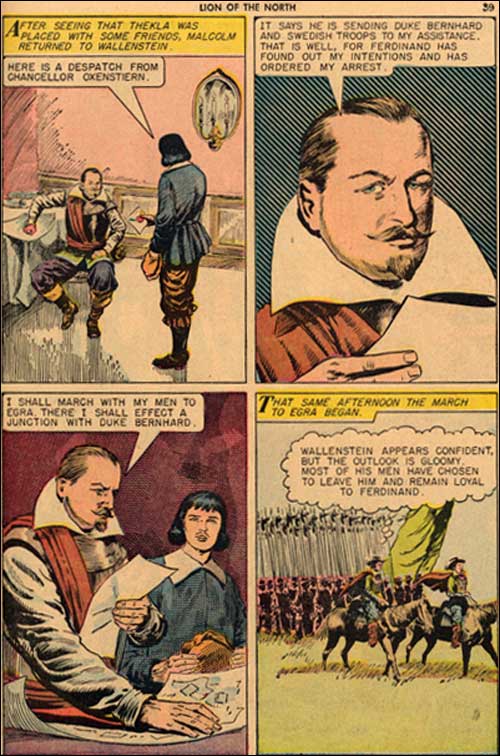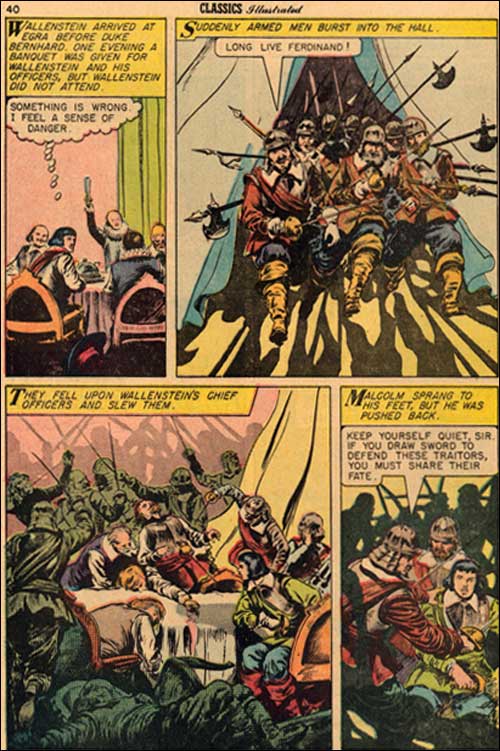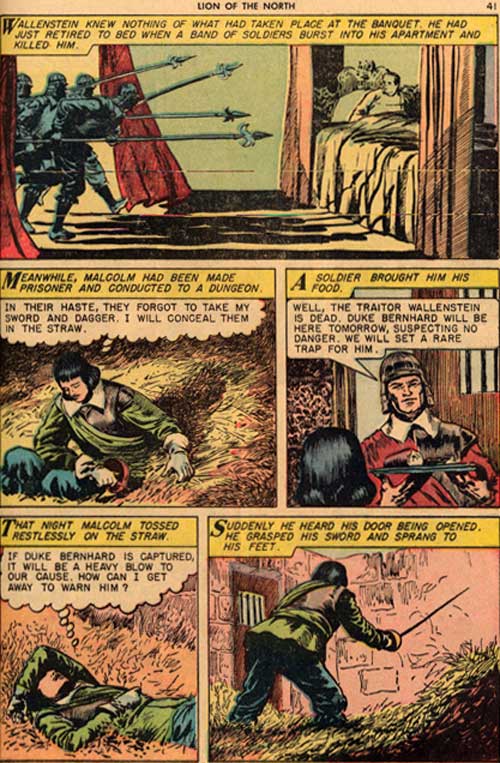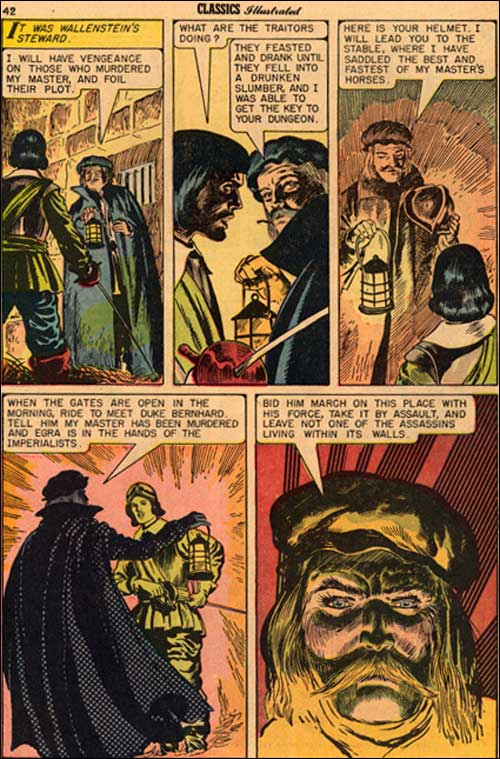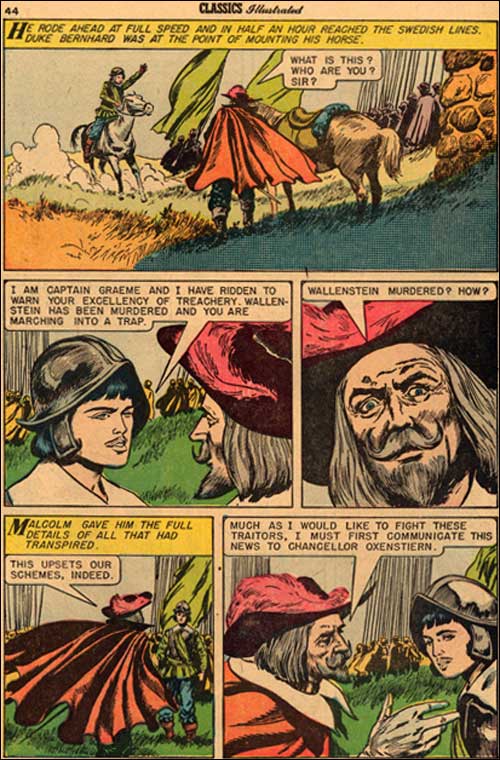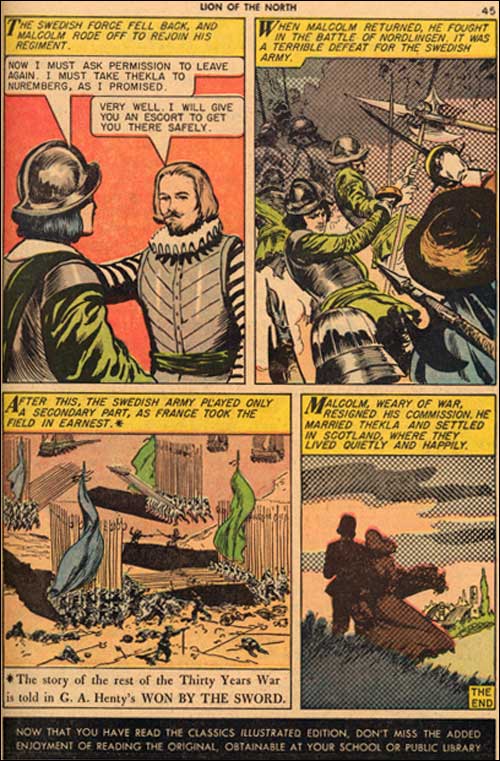By
G. A. Henty
French,
Swedes, and Scots save Germany for the Reformation during the 30
Years' War (1618 -1648). |
King Gustavus of Sweden—the Lion of the North
|
King Gustavus of Sweden (1594 -1632). |
King Gustavus addressing the Swedish Parliament. |
King Gustavus had a presentment that he would not return from the battle with the Roman Catholic imperialists. In this picture he is presenting his 5 year old daughter Christiana to the Diet and admonishing them to respect her as queen in the event that he did not return. His tearful wife looks on in the background.
|
The invincible general leading his men into battle. |
King Gustavus was shot twice in the back by a false "friend" at the Battle of Lutzen in 1632. |
King Gustavus was shot twice in the back by a false brother, Franz Albert, Duke of Lauenberg. He was felled from his horse and several imperialists opened fire and killed him on the ground. He died a martyr for Jesus and the HERO of the Reformation.
Duke Franz Albert feigned conversion to the Protestant Faith and was warmly received by the king. He sought for an opportunity to assassinate the king before the battle but was unsuccessful. During the battle he rode behind the king and at an opportune moment shot him twice in the back. Then he rode off to tell Wallenstein of the death of the king.... False brethren can be very, very dangerous. The enemy WITHIN is far, far more dangerous than the enemy without.
The 30 Years' War was the most terrible conflict in world history. The war was instigated by the Jesuits in order to undo the blessed Reformation and to keep the unholy Roman Empire from disintegrating....The imperialists gave no quarter. In the sack of Magdeburg over 30,00 men, woman and children were butchered without mercy.
The American Civil War was a bloody conflict but that war only lasted 5 years and the antagonists did take prisoners. Multiply that conflict by SIX and you get some idea of what the war was like.
Background of the conflict
The unholy Roman empire was a confederation of states that included Austria, Burgundy, Germany , Lombardy (northern Italy) and parts of France. Its founder was called Charles the Great or Charlemagne. He was crowned Emperor of this unholy empire by the Pope on Christmas day in the year 800 A.D.
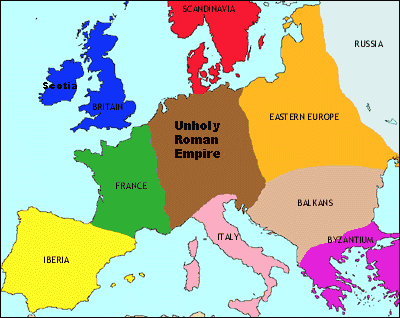
Map of the unholy Roman Empire.
This powerful confederacy was able to dominate Italy and keep that country divided. At the time of the 30 Years' War its northern capital was Vienna, Austria, and its southern capital was Rome.
This division gave the Popes the opportunity to form their own states called the states of the "church" or the patrimony of "St. Peter." By having their own states and customs, the Popes were able to ship gold and soldiers in and out of the Vatican without having to answer to the lawful Italian government.
Map of the Papal States
The Peace of Westphalia
|
Cardinal Richelieu, Prime Minister of France from 1624 to 1642. |
When the war ended with the Peace of Westphalia in 1648, there was nothing left to fight over....Europe was ruined....France emerged the clear winner under the leadership of Cardinal Richelieu. The unholy Empire was greatly weakened when France entered the conflict. The map of Europe that was drawn after the war has still continued unchanged unto this very day!! Cardinal Richelieu was the founder of the French Academy. The Cardinal despised Jesuitism and Jesuits and in 1638 he was determined to cast off the yoke of the Papacy and form an independent Gallican church composed of Huguenots and Catholics. Because of his opposition to Jesuitism he fell a victim to the "poisoned cup" at the young age of 57. |
God is still looking for CHAMPIONS like the Lion of the North and Malcolm Graeme, the hero of the following story:
Each page is 500 x 700 pixels. Average page size is about 70k.
|
Front Cover |
page 1 |
page 2 |
page 3 |
|
page 4 |
page 5 |
page 6 |
page 7 |
|
page 8 |
page 9 |
page 10 |
page 11 |
|
page 12 |
page 13 |
page 14 |
page 15 |
|
page 16 |
age 17 |
page 18 |
page 19 |
|
page 20 |
page 21 |
page 22 |
page 23 |
|
page 24 |
page 25 |
page 26 |
page 27 |
|
page 28 |
page 29 |
page 30 |
page 31 |
|
page 32 |
page 33 |
page 34 |
page 35 |
|
page 36 |
page 37 |
page 38 |
page 39 |
|
page 40 |
page 41 |
page 42 |
page 43 |
|
page 44 |
page 45
| ||
Vital Links
A short biography of G. A. Henty.
Rome Ruins Classics Illustrated.
Books by G. A. Henty from PrestonSpeed Publications
Editor's Notes
The Scottish Army that served with King Gustavus was called the GREEN BRIGADE after the Emerald Isle (Hibernia) that was the original home of the Scots!!
Scottish Participation in the Thirty Years' War.
"But the years of glory soon came with the Scottish participation in the Swedish army of Gustavus Adolphus, who intervened briefly but decisively on the side of the Protestant cause in the Thirty Years' War (1618-1648. To the Swedish army, Scotland contributed troops variously estimated at twenty to forty thousand men, by far the greatest levies of any country and a substantial percentage of that small country's population. The Scots morale was raised above that of the common mercenary because of a feeling of loyalty to the king of Bohemia, whose wife was the daughter of their own King James VI, and it is said that they were willing to live on roots and carrots to fight for Protestantism. Thus they were entrusted with the most perilous tasks, and invariably stood firm.
It seems certain that Gustavus Adolphus could not have gained his victories without his Scots. More than sixty of them were made governors of castles and towns in the conquered provinces of Germany, including Maj. Gen. Sir D. Drummond, governor of Stettin; Maj. Gen. Sir James Ramsay, governor of Hanau; and Maj. Gen. W. Legge, governor of Bremen.
In the Thirty Years' War Scotland contributed, in addition to those above, the following officers in the service of Sweden:
Field marshals: Sir Robert Douglas; Hugo Hamilton; Sir Alexander Leslie, governor of the Baltic provinces; and Sir Patrick Ruthven, governor of Ulm.
Generals: George, earl of Crawford-Lindsay; James, marquess of Hamilton; Malcolm Hamilton; Andrew Rutherford, earl of Teviot; and Sir James Spence.
In addition to these were Lt. Gen. Alexander Forbes, tenth Lord Forbes; Vice Admiral Richard Clark; at least nine major generals; and forty-one colonels. Special mention must be made of some. Donald Mackay (Lord Reay) raised the famous Mackay's Regiment, which fought with much distinction, and Robert Munro, of Foulis, was a close confidant to the king. William Philip retired as commander in chief of the Swedish army in 1658. Alexander Erskine was minister of war to Gustavus Adolphus and represented Sweden at the conference that resulted in the Treaty of Westphalia (1648) ending the Thirty Years' War. Robert Douglas began his career as a page to Gustavus Adolphus and rose to field marshal. His dashing courage at the decisive Battle of Jankovitch, near Prague in 1645, "was mainly responsible for the downfall of the Imperialists." His descendant, Gen. Archibald Douglas, was commander in chief of the Swedish army during World War II.
Col. John Hepburn participated in battles all over Germany. His Scots Brigade, with a drummer sounding the feared "March of the Scots," led the advance at one of the decisive battles in world history, the Battle of Breitenfeld, near Leipzig, which opened southern Germany to the Swedes. Hepburn took possession of Leipzig in September 1631. Munich fell to him in 1632 when the Scots Brigade, piped in by Mackay's Highlanders, were the first to enter. Hepburn was made governor of Munich, and his men, much to the disgust of the Swedes, were entrusted to guard the person of the king. Despite all of this, when Gustavus quizzed Hepburn as to why his armour was so splendid and why he was a Roman Catholic, the insulted Scottish hero at once sheathed his sword and left the Swedish service for France, where he was immediately made a field marshal.
Field Marshal Alexander Leslie was largely responsible for Russo-Swedish military cooperation as Sweden's envoy to Russia. He had also been the Swedish commander who relieved the besieged town of Stralsund in 1628. On July 18 he forced his way into the town, and on August 3 the siege was lifted. According to George A. Sinclair, "All historians, including Carlyle. . . are agreed... that if the city had fallen, Sweden and Denmark would have been excluded from further interference in Germany. " Eventually Leslie succeeded Gustavus Adolphus in command of the Swedish army in central Europe. "(Bruce, The Mark of the Scots, pp. 159-160)
References
Bruce, Duncan A.The Mark of the Scots. Carol Publishing Group, Secaucus, New Jersey, 1996.
Haythornthwaite, Philip J. Invincible Generals. Indiana University Press, 1992.
Mc Cabe, Joseph. A Candid History of the Jesuits. G.P. Putnam's Sons, New York. 1913.
Mc Cabe, Joseph. The Iron Cardinal (the Romance of Richelieu). Eveleigh Nash, London, 1909.
